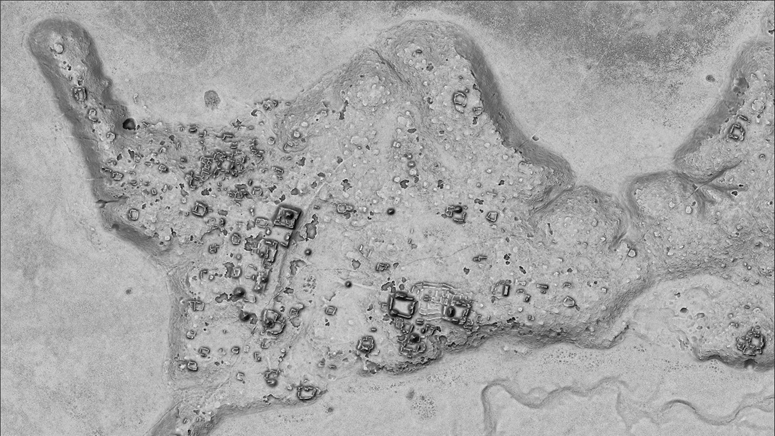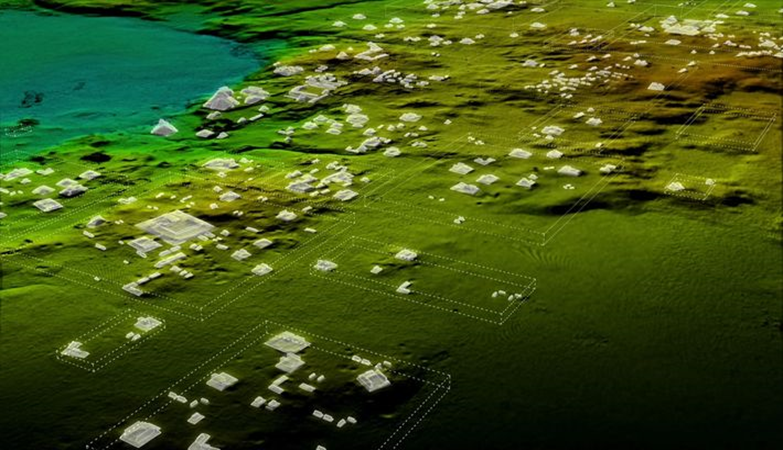Discovery of Ocomtún, a Mayan city in the Yucatán Peninsula

Archaeologists have discovered an ancient Mayan city in Campeche. They gave it the name Ocomtún, “stone pillar”.
Airborne LiDAR technology has made it possible to detect an ancient Mayan city in the middle of the Mexican rainforest, where the ancient lowlands of this vanished civilization once stood.
A discovery made in May was announced by the National Institute of Anthropology and History (INAH) of Mexico on June 20. A team of around fifteen Mexican and Slovenian archaeologists, as well as local workers, led by Ivan Šprajc, archaeologist and archaeo-astronomer, director professor at the Institute of Anthropology and Space Studies of Slovenia, discovered a ancient Mayan city. The city of Ocomtún, unearthed in the heart of the forest of the state of Campeche, in the Yucatán Peninsula, dates from the classic period of pre-Columbian history, i.e. 250 to 1000 AD.
This discovery is the result of the latest expedition of the “expansion of the archaeological panorama of the central Maya lowlands” project, approved by INAH and the Mexican Ministry of Culture. This research project has been carried out in this little-known area since 1996. First in the southeast of the state of Campeche, then to the north, at the Calakmul biological reserve, before turning further towards the west, at the level of the Balamkú biological reserve, where Ocomtún was discovered.
AN ODYSSEY OF THE DISCOVERY OF THE ANCIENT MAYAN LANDS
“We have worked in this area for more than twenty years,” explains Ivan Šprajc. The most recent research season, during which the city of Ocomtún was discovered, was carried out in the state of Campeche in Mexico. This area is located in the center of the Yucatán Peninsula.
No archaeological site had yet been discovered in this area within a radius of 3,000 km², which until now constituted the main gap on the archaeological map of the central zone of the Mayan lowlands, although many sites still remain unknown and unexplored throughout the study region.
The scientists based themselves on a laser scan study of part of the area due to the extent of its surface. Numerous archaeological deposits have been brought to light using remote sensing technology, the LiDAR (light detection and ranging) laser, which made it possible to determine the subtleties of the slight slope of the terrain, hidden by the thick plant cover of the region ( forests and pastures).
LiDAR has been used in archeology for over fifteen years. “We can see many details whose existence was previously unknown to us,” says the chief archaeologist. This technology has revolutionized modern archeology, because it makes it possible to circumvent the problem of traditional excavations, which are particularly complex, or even impossible, to carry out in regions covered with particularly dense vegetation.

Laser technology known as LiDAR reveals Mayan ruins hidden on the ground by dense forest cover.
Initially invented for military purposes, this device is composed of laser sensors, which are attached to planes, drones or helicopters, which fly over the area studied. These sensors send brief, rapid pulses of light towards the ground. They pass through the plant cover and bounce off the surfaces. The time that each light pulse takes to return to the sensor makes it possible to produce a cloud of points connected to GPS data. Computer processing subsequently allows archaeologists and cartographers to offer a three-dimensional vision of what is buried under the vegetation.
IN THE TRACES OF OCOMTÚN
“We selected a few areas,” continues Ivan Šprajc, “in which we suspected the presence of archaeological remains, based on public remote sensing images, but also photographs from the Mexican National Institute of Statistics and Geography.” Despite the difficulty of discerning any shape beneath the lush vegetation, archaeologists have spotted some intriguing shapes. It is in the northern region of the studied area that researchers discovered the large city of Ocomtún, “stone column” in Yucatec Mayan.
Scientists are not only interested in the remains of buildings, they are trying to visualize how an entire local society was organized. Great interest in traces of agriculture, but also in land use planning, for example making it possible to supply the different areas with water, was the subject of particular attention. It’s difficult to talk about “sites,” explains Ivan Šprajc. “In the ancient Mayan territory, there are areas that can be described in this way because there are [punctual] urban locations. But in other cases, we observe entire landscapes which have been modified in their continuity. […] There are then no clear boundaries between these different locations.”
Ocomtún, which extends over more than 50 hectares, is one of the largest territories recently discovered. “We found agricultural terraces, water management facilities, such as canals, and even water reservoirs. […] These modifications sometimes cover large areas of the landscape,” he adds. The hydraulic system was probably essential given that there was no tributary, and that the water tables in the area are between 70 and 100 meters below the surface, therefore inaccessible with water technologies. era.

Left: Engraved stone block found in the city of Ocomtún
The city of Ocomtún, delimited by this very particular arrangement, probably constituted the heart of a separate community, relatively powerful at that. Archaeologists have found ancient temples, pyramids and palaces in ruins on site. “The highest structure is a kind of acropolis […] 25 meters high,” describes Ivan Šprajc. “But the particularity of this area is that we found no trace of hieroglyphic inscriptions […] except on a block of stone, integrated into a staircase” he adds, insisting on the need to carry out new research .
“The elevated area [therefore] contains many massive structures, including cylindrical columns [which inspired researchers to name the city] and many similarities with other Mayan sites.” However, the lack of detail and inscriptions commonly found at other Mayan sites indicates that there were standards and variations in city design. “Maya culture was very diverse, particularly in the lowlands region,” explains the archaeologist.

Right: Remains of the steps of a staircase in the Mayan city of Ocomtún.
The Mayan civilization remains today one of the most enigmatic, but also the most unknown, cultures in History. The work of Ivan Šprajc's teams made it possible to collect samples of civilization and enlarge the archaeological map, to open up new fields of research.
“The Maya never unified into a single state. They lived divided into a multitude of small states, based on alliances or antagonistic relationships,” explains Ivan Šprajc. “This is why there is such diversity in the territory of the Mayan Lowlands.” Ocomtún constitutes one of the fragments of the past which testifies to this diversity and the organization of this pre-Columbian civilization, then “more densely populated and developed than it is today”.
Source: websites

